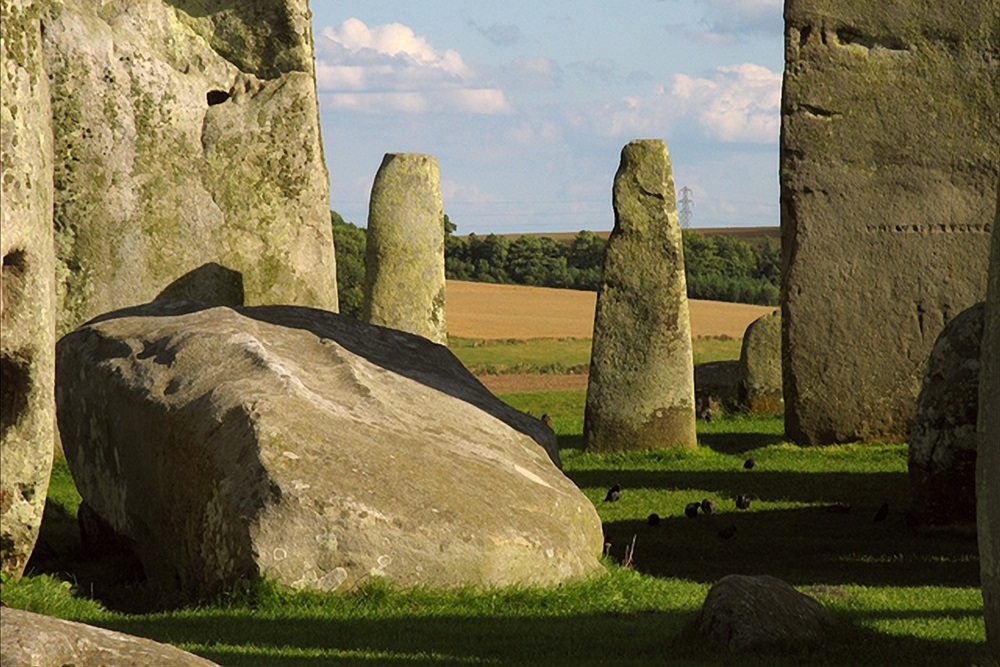Doubt cast on claim that Stonehenge altar stone came from Wales

Martin Shipton
The origin of the largest “bluestone” at the heart of Stonehenge has been thrown into doubt by Aberystwyth University research.
For the past 100 years, the 6-tonne Altar Stone was believed to have come from Old Red Sandstone in south Wales.
This was assumed to be close to the Preseli hills in west Wales where the majority of Stonehenge’s world-renowned ‘bluestones’ came from.
Formed when molten rock crystallised, the Pembrokeshire bluestones are believed to have been among the first erected at the Wiltshire site around 5000 years ago.
The Altar Stone, a sandstone, has traditionally been grouped with the other, smaller, igneous bluestones, although when it arrived at Stonehenge is unclear.
Now, in an attempt to locate its source, scientists at Aberystwyth have compared analyses of the Altar Stone with 58 samples taken from the Old Red Sandstone across Wales and the Welsh borders.
Barium
The composition of the Altar Stone cannot be matched with any of these locations. The Altar Stone has a high barium content, which is unusual and may help in identifying its source.
Professor Nick Pearce from Aberystwyth University said:
“The view in terms of the conclusions we’ve drawn from this is that the Altar Stone doesn’t come from Wales. Perhaps we should also now remove the Altar Stone from the broad grouping of bluestones and consider it independently.
“For the last 100 years the Stonehenge Altar Stone has been considered to have been derived from the Old Red Sandstone sequences of south Wales, in the Anglo-Welsh Basin, although no specific location was identified.
“The Altar Stone appears not, in fact, to come from the Old Red Sandstone of the Anglo-Welsh Basin – it is not from south Wales. Attention will now turn to the other areas, like northern England and Scotland, areas where the geology is right, the chemistry is right, and Neolithic activity is present, to ascertain whether any of these sandstones have characteristics which match the Stonehenge Altar Stone.”
Professor Pearce added “Hopefully these findings will help people to start looking at the Altar Stone in a slightly different context in terms of how and when it got to Stonehenge, and where it came from. Hopefully this will lead to some new thoughts about the development of Stonehenge.”
The research was published in the Journal of Archaeological Science: Reports.
Support our Nation today
For the price of a cup of coffee a month you can help us create an independent, not-for-profit, national news service for the people of Wales, by the people of Wales.








Love it … yet another another theoretical ‘fact’ debunked by actual scientific data.
When they find the source, next question to answer is – how did it get there; was it transported by men, dropped from a spaceship, or is it an Erratic deposited by the ice sheet ???
I feel that something is not considered a fact if it is theoretical. And I’m not sure this debunks anything. It simply offers an update of knowledge. As to how it got there, possibly the same way as the Bluestones? On a sled to the coast, or major river then on a boat until it got to the site (bearing in mind that much of Somerset and Wiltshire would have been below water around this time (I have been told)
In some ways this is exciting as it also raises the questions of a) where did it come from and b) how did our ancestors get it there as mentioned by Saveenergy and Sarah. For me, b) is the most interesting as our ancestors were pretty smart and at times I feel that they were much smarter than many in Westminster. Anyway, the identification of a nearly exact source location would be excellent. So keep going Professor Pearce, we are waiting in excitement so that we can speulate on how it got moved.
Why do we persist in using modern place names like Wales, England and Scotland when discussing topics that predate any of these geographical names? It may be convenient but it’s misleading. It gives the impression that the borders have always been where they are now. England didn’t exist when Stonehenge (Gwaith Emrys)was erected.
I suspect because if we used the old names, most of us wouldn’t know where they are. Although saying that, I get really fed up hearing about “Saxon” discoveries on our island, but when they can’t claim that everything found is Saxon or Roman, they refer to Bronze Age or Iron Age, rather than use the names of the original British people’s names, even thought these, and their geographies are known,
Maybe the stone is in Rheged, or Elmed in the old north
It’s all designed to create the impression that nothing of importance happened here and to the Britons (Cymry) prior to the Saxons.
That’s exactly why! You do it so you can attribute it to modern countries. Er go, Make it seem English. They do this with many cultural aspects of Wales, where they get attributed to the incorrect people. Whether it’s the founding of Paris, Ogham in Ireland, place names in Scotland. The people of Wales would be shocked at the amount of cultural important things that have been stolen from them using this exact method. They use it to claim Arthur also remember! Often citing Tintagel as the reasoning why England can claim him.
It all still belongs to the Britons anyway. As whether it comes from Wales is a red herring. That area like most areas of England were controlled by the ancient Britons, these people ofcourse are now called “Welsh” in English. I have always found it weird as to why the Mystery is still seen as a Mystery. The Gallic – Brythonic Druids who became the Welsh built it.